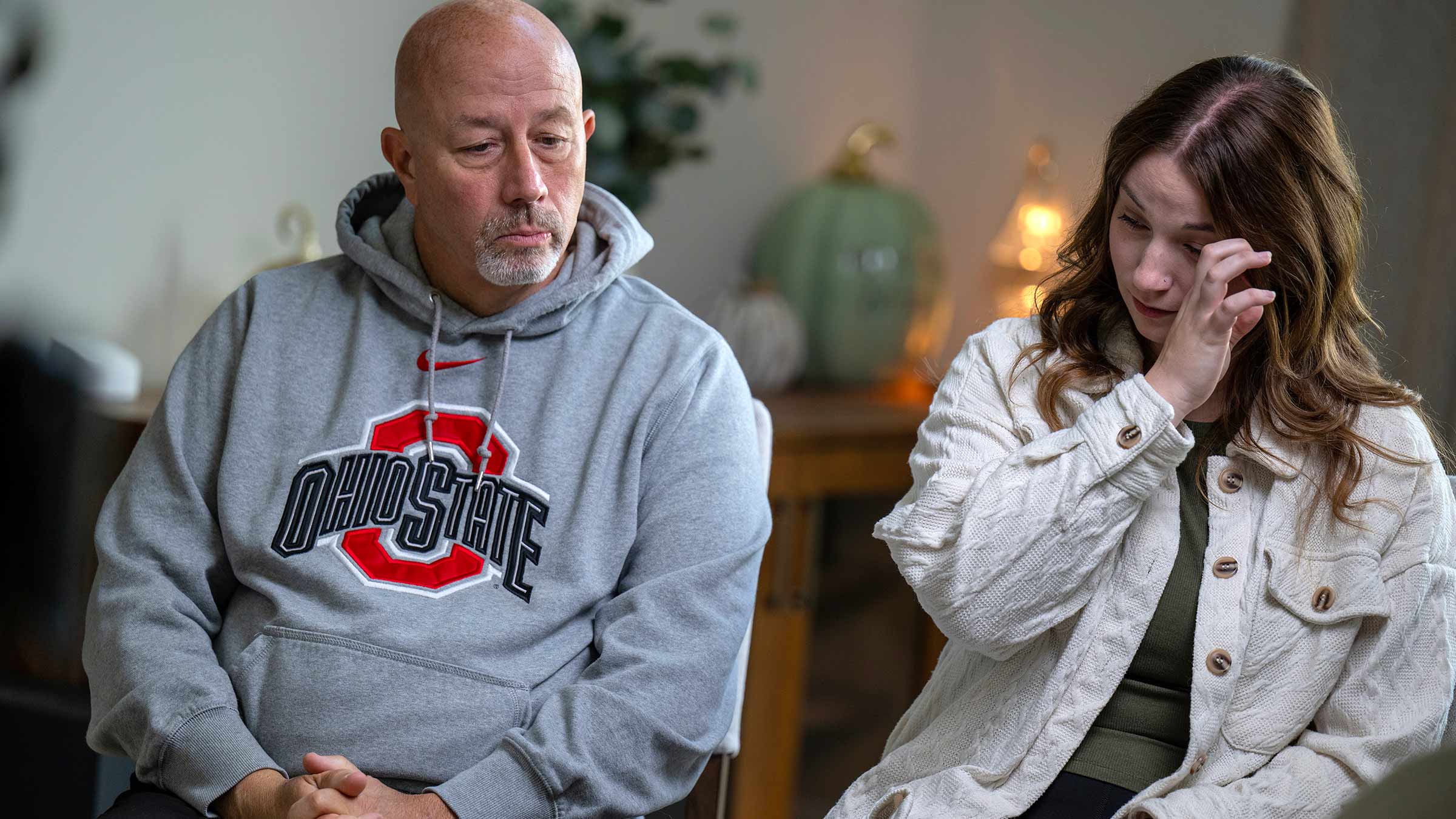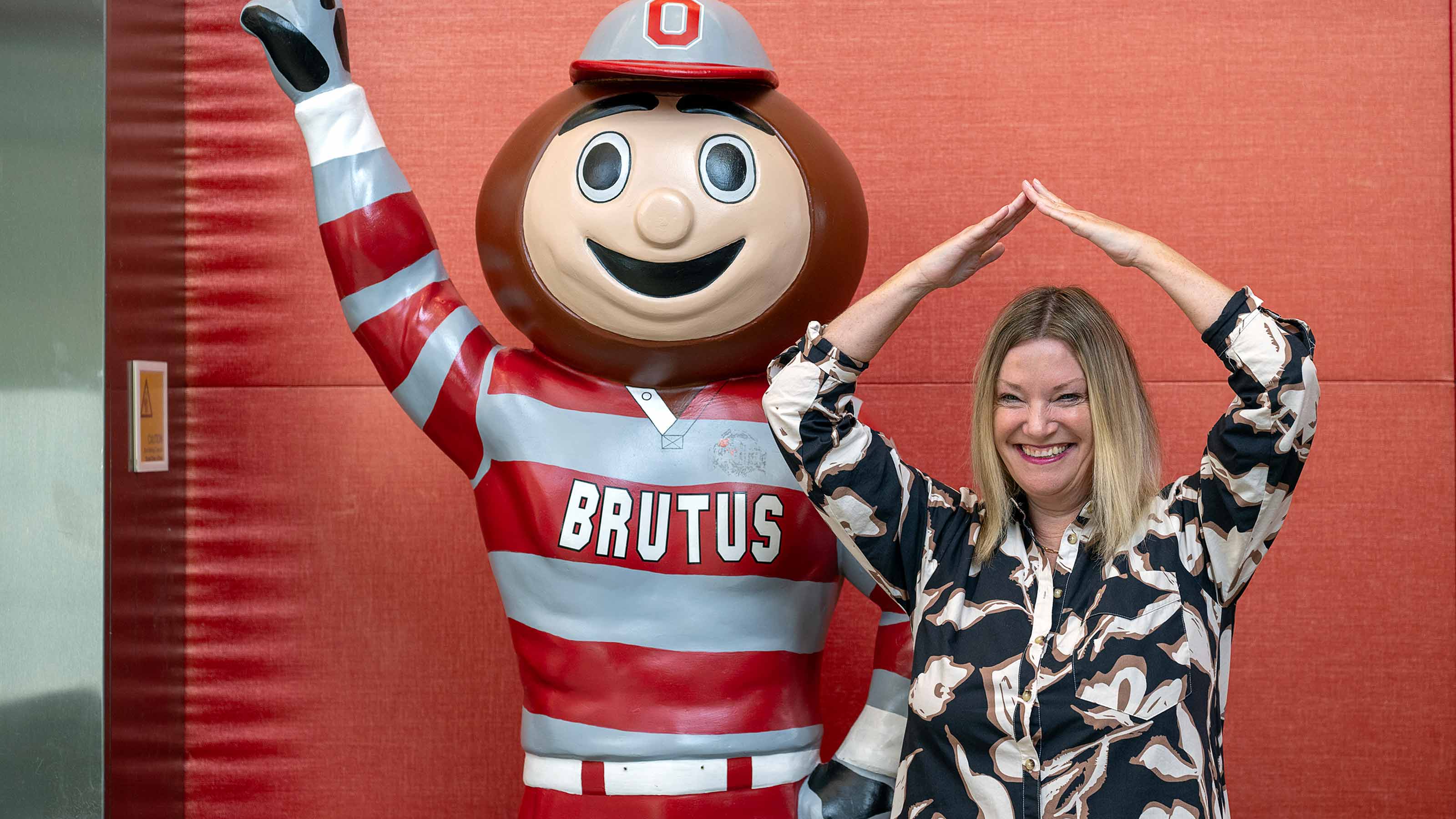Bystander CPR instrumental in saving fan’s life during Ohio State football game
Quick action during a cardiac arrest saves an out-of-state fan’s life in Ohio Stadium.
The Ohio State University football game had just kicked off vs. state rival Ohio University, and every fan in Ohio Stadium was in a frenzy. Colby Morris’ eyes, however, weren’t on the game but on a fan slumped over on his side and being tended to by two Red Cross volunteers in the breezeway leading to the upper-level seats.
Morris’ instincts as an intensive care nurse in South Carolina kicked in, and he went over to assist. He knew instantly the unresponsive man was in bad shape. He bent down and felt for a pulse.
Nothing.
Jumping into action to stop a cardiac arrest
“Help me roll him over,” he yelled to the Red Cross volunteers above the roar of the crowd. Placing a hand on the man’s chest and lacing the fingers of his other hand, Morris started pressing hard and fast as he administered CPR. The man, Carmen Zone, a California resident in town for the football game, was in cardiac arrest.
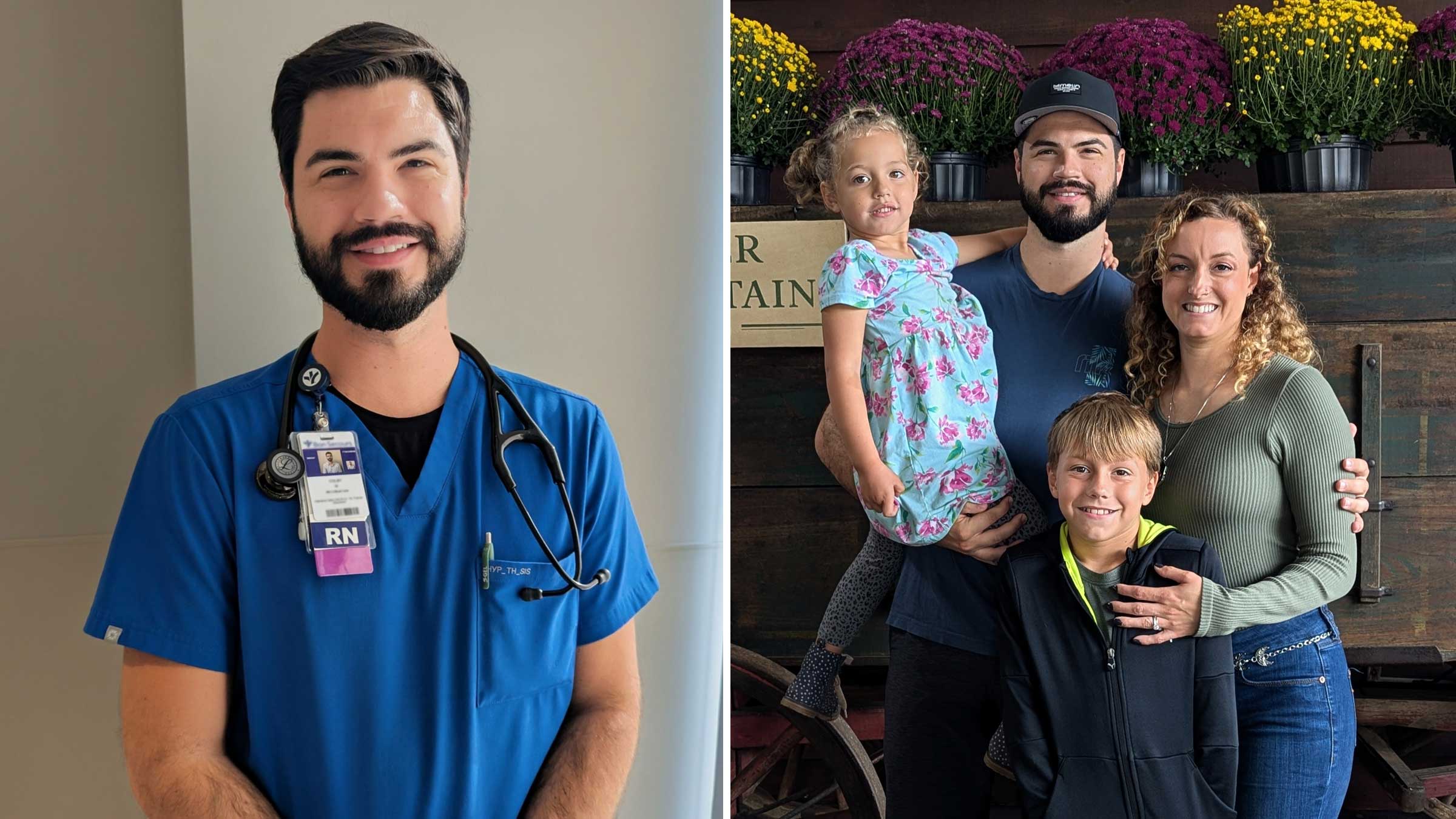
Unfortunately, only one out of 10 cardiac arrest patients survives outside a hospital setting, and immediate treatment like CPR, which keeps blood flow active, is crucial, says Ashish Panchal, MD, PhD, an emergency medicine physician at The Ohio State University Wexner Medical Center.
“I need an AED,” Morris yelled. Within one minute, the medical device was in his hands. An AED (automated external defibrillator) analyzes the heart’s rhythm to determine if it needs to deliver an electrical shock to put the heart back into rhythm. Ohio Stadium has five AEDs permanently installed, and both the Red Cross and the Columbus Fire Department bring additional AEDs to public events in the 102,000-seat stadium.
The AEDs come with clear instructions for their proper use and for when to stop administering CPR so they can deliver an electrical shock. Because the crowd was so loud, Morris couldn’t hear the AED prompts and had a Red Cross volunteer put her ear near it to let him know when an electrical shock was imminent. When the shock was delivered, Morris started CPR again and stopped when Zone started regaining consciousness. But then Zone’s eyes rolled back in his head — he was coding. Morris started CPR again until the second AED shock could be delivered, restoring Zone’s pulse. Shortly after that, the Columbus Fire Department paramedics arrived. They immediately transferred Zone to The Ohio State University Wexner Medical Center less than a mile away, where he was stabilized.
“I could see the medical center from the stadium and knew at that moment he had the best possible chance of survival,” says Morris, who was back in Ohio that day to watch his alma mater play against the Buckeyes.
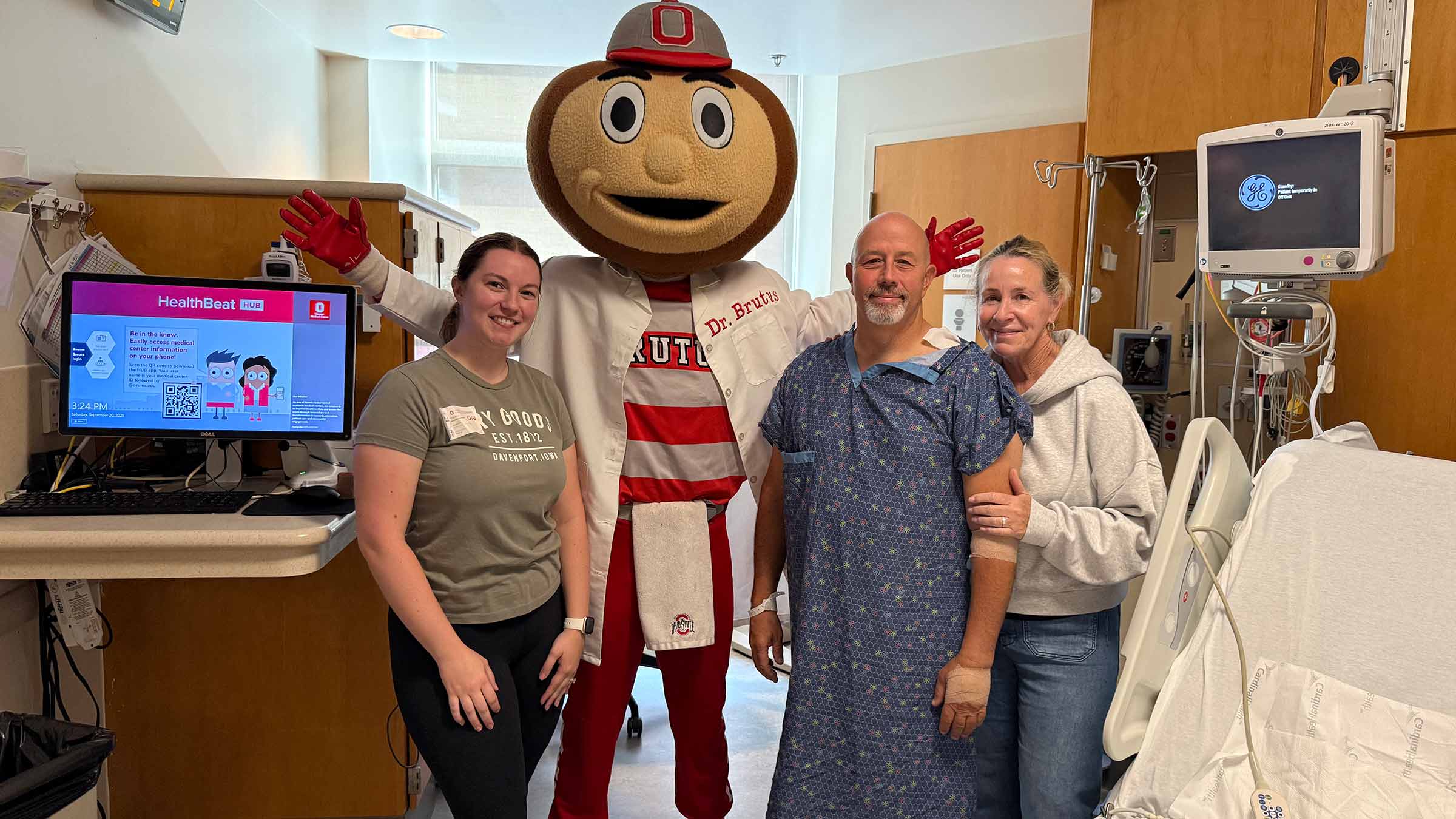
Building awareness of CPR’s lifesaving capabilities
“For every minute that goes by without intervention, survival from cardiac arrest drops by 10%,” says Richard Gumina, MD, PhD, The James W. Overstreet Chair in Cardiology, an interventional cardiologist who was part of the medical team that treated Zone.
A week and a half after the cardiac arrest, Zone shared his story, hoping to raise awareness about the importance of using CPR and an AED to save a life. He’d used an AED a couple of times during his career as a California state park ranger but never dreamed it would be used on him. While the 56-year-old had experienced some abnormal heartbeats in the past, he was fit and an avid hiker.
During that Sept. 13 football game, Zone felt a bit breathless and lightheaded walking into Ohio Stadium but brushed it off. The last thing he remembers is reaching for his phone to show his tickets to the usher before falling to his knees. Tests later showed his potassium levels were very low, triggering ventricular fibrillation (V-Fib), the most common deadly heart arrythmia. During V-Fib, the lower heart chambers quiver instead of beating normally, resulting in the heart not pumping blood to the rest of the body.

Preventing future cardiac arrests
Because Zone is at high risk of going into V-Fib again, electrophysiologists at The Ohio State Richard M. Ross Heart Hospital implanted a defibrillator into his chest. The device can detect arrhythmias and deliver an electric shock, like an AED, to put the heart back into normal rhythm.
“We talk a lot about the chain of survival and how the different links work together to save a life. In Carmen’s case, everything came together in the perfect storm and because of that he was able to go home to his family neurologically intact,” says Dr. Panchal.
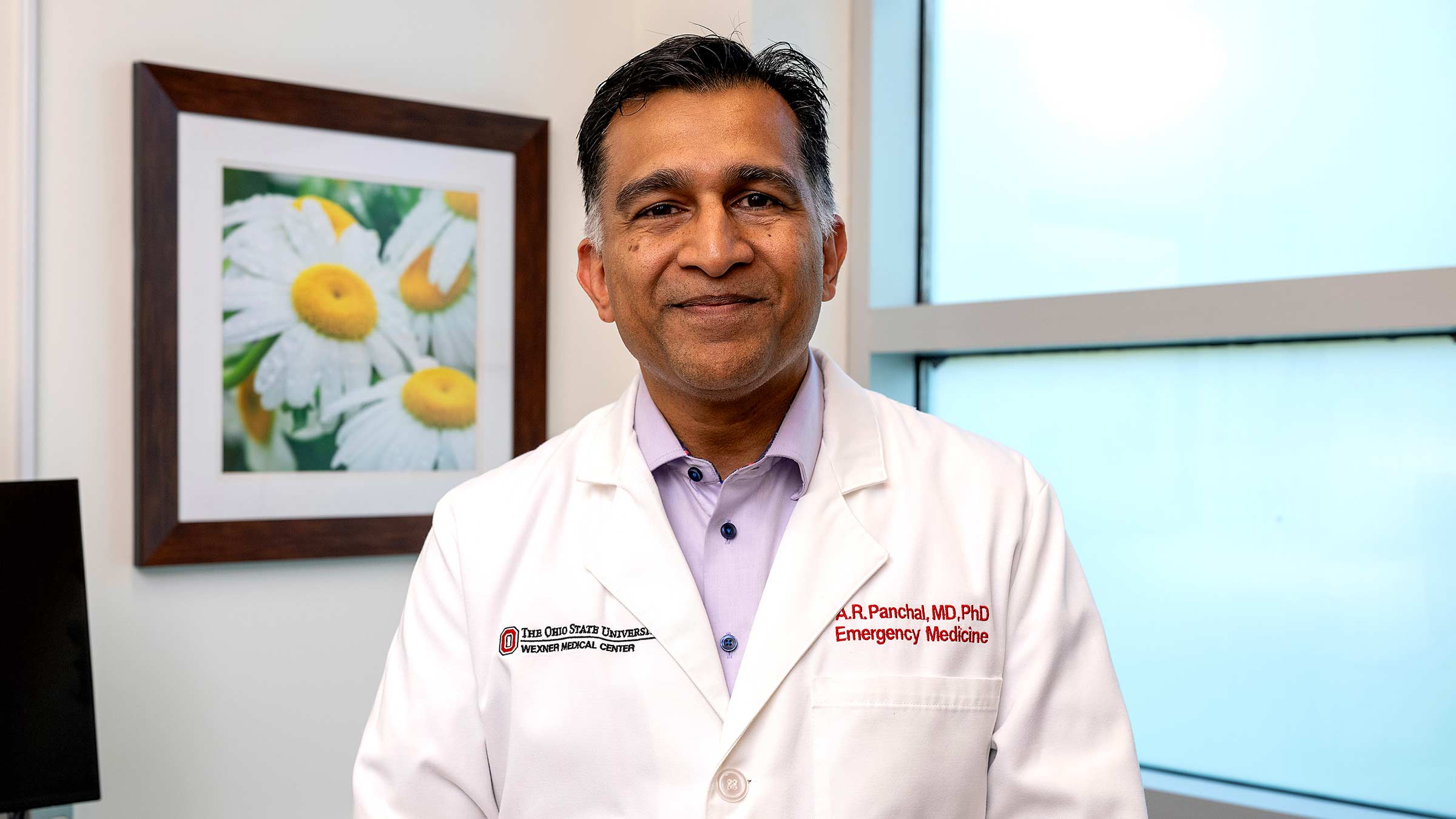
Zone has been following up with his cardiologist in California and is already talking about returning to Ohio to see the Buckeyes play, along with his wife, daughter, son and son-in-law, who were with him at the game when he collapsed. He hopes Morris can join him as his special guest.
An emotional Zone praised the Ohio State medical team that cared for him for a week.
“Knowing I was at a major university that has an excellent medical program provided a calmness for me,” Zone says.
“It really made my anxiety levels go down, If anything else was going to happen. I couldn’t have been at a better place for it to happen,” he says.


Your heart is in the right place
Learn more about advances in care and treatment for patients at The Ohio State University Heart and Vascular Center
Expert care starts here


